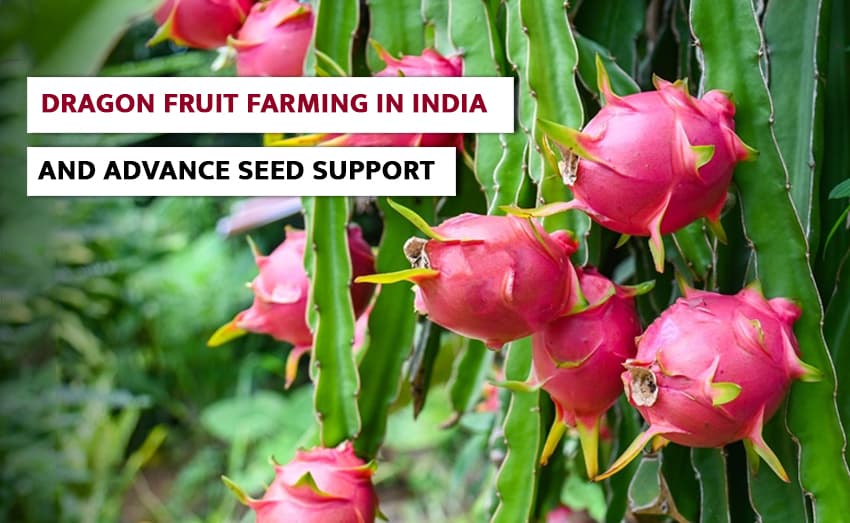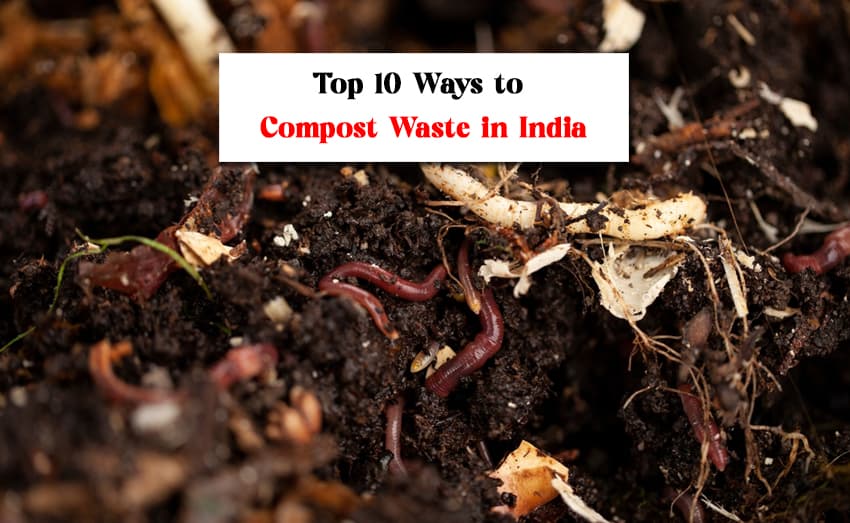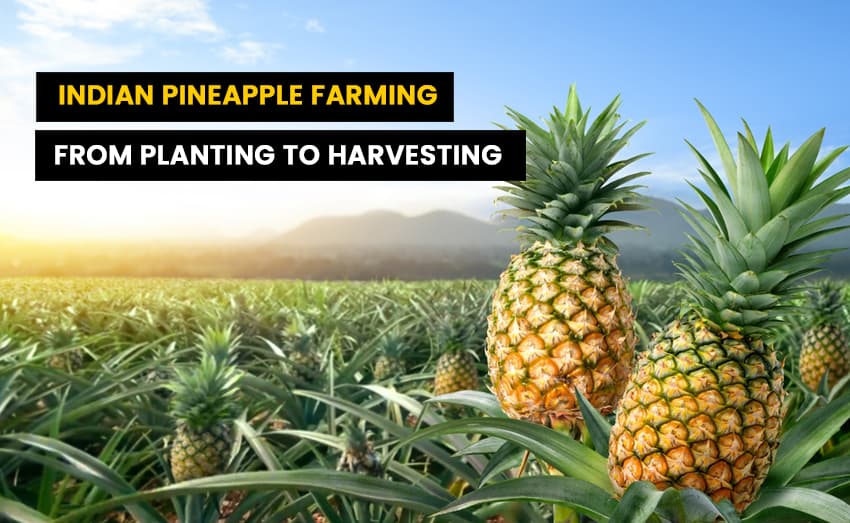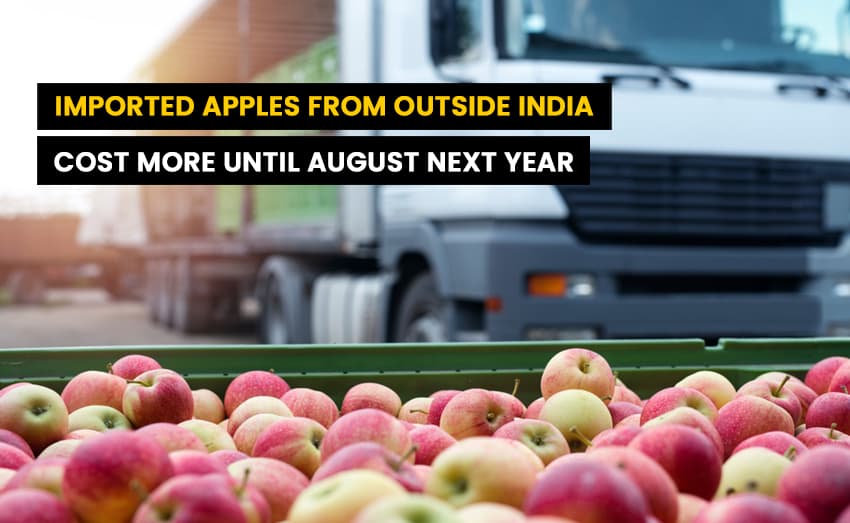Dragon Fruit Farming in India: How to Grow and Make Money Per Acre
Dragon fruit, which is also called Pitaya, has become more famous in India recently because of how it looks, tastes, and is good for you. Dragon fruit growing is now a good way to make money because of high demand in both the US and other countries. This book will teach you everything you need to know about growing dragon fruit, from the right soil and climate to how much it costs and how much you can make per acre, as well as how to sell your plants to get the best results.
How Do I Grow Dragon Fruit?
When it comes to climate, dragon fruit is tropical or subtropical. It comes from a bush. It's pretty simple to grow and doesn't need as much water as some other fruit trees, which makes it perfect for places where water is limited.
How to Grow Things
- Planting Season: Summer is the best time to plant this fruit because of the rainy season (June to July). But in tropical and subtropical areas, it can be grown at any time of the year.
- How to Plant: Dragons are usually grown from seeds or cuttings. Cuttings are better than seed-grown plants because they grow faster and produce fruit earlier.
- Plant the cuttings 1.5 to 2 meters apart in rows, and give the climbing plants something to climb on.
- Not all soils are good for it; But the best soil is sandy clay that drains well and has a pH level between 5.5-7.
- Fertilization: For fertilising, you can use organic waste or manure from a farm as a base. Small amounts of balanced NPK (Nitrogen, Phosphorus, and Potassium) fertilisers can be used to help plants grow.
- Watering: Since these plants are cacti, they don't need a lot of water. Don't overwater to avoid root rot.
Land and Weather for Growing Dragon Fruit
Climates that are warm or subtropical are good for dragon fruit. That's why it can be grown in many Indian states, including Maharashtra, Karnataka, Gujarat, Andhra Pradesh, Tamil Nadu, and Telangana. It can handle both heat and drought.
- Climate: The temperature needs to be between 20°C and 30°C.
It grows best in places with low humidity and average rainfall (50 to 100 cm a year). Too much rain or frost can hurt the crop.
- Land: Depending on the space and support system, an acre of land can hold between 800 and 1,000 plants.
The land should be able to drain well and get enough sunlight. Lands that are higher up and have good drains are best for keeping water from getting stuck.
Harvesting of Dragon Fruit
Most of the time, these fruit trees start producing fruit two or three years after they are planted. If you take good care of your dragon fruit farm, it can keep producing fruit for up to twenty years.
Flowering and Fruit Development: The plant flowers in May or June, and the fruit is ready 30 to 40 days after the flowers. From July to November is when most fruits are picked.
Yield: In its first few years, a plant may only flower or fruit once every two years. A fully grown plant, on the other hand, can produce four to six rounds a year, giving an average yield of eight to ten tonnes per acre.
How to Pick: Depending on the type, dragon fruits are picked when they turn bright red or yellow. Overripe veggies lose their flavour, so it's important to pick them at the right time.
Dragon fruit is good for your health.
Dragon fruit is often called a "superfood" because it is good for you in so many ways:
- Antioxidants: Vitamin C, beta-carotene, and betalains are found in large amounts in the fruit. These help fight free radicals and lower oxidative stress.
- High in Fibre: A steady blood sugar level and improved digestion are two benefits of the high fibre content.
- Boosts Immunity: The defence system is stronger and skin health is better because of the large amount of vitamin C.
- Low in Calories: This fruit is great for people who are watching their weight because it is low in calories and high in vitamins and minerals.
- Heart Health: There are lots of omega-3 and omega-6 fatty acids in the seeds of this fruit. These acids are good for your heart and lower cholesterol.
How Much Does It Cost to Farm 1 Acre of Dragon Fruit?
Costs and profits from farming can change based on where the farm is located, the cost of work, and the state of the market. Here is a list of the general costs and possible profits:
Costs of the first investment (1 acre)
- ₹30,000 to ₹50,000 for infrastructure and getting the land ready. This includes things like fencing, support buildings, and irrigation systems.
- cuts for planting: ₹20,000 to ₹30,000 (for 800 to 1,000 cuts).
- Costs of labour and plants: ₹20,000 to ₹25,000.
- 10–15 thousand rupees a year for fertilisers and manure.
- ₹5,000 to ₹10,000 for irrigation.
- Other (Pesticides, Maintenance): 10,000 naira a year.
- Total investment at the start: ₹95,000 to ₹1,40,000
Annual Income and Yield:
- Yield: The yield is lower in the first few years (3–4 tonnes per acre), but it can reach 8–10 tonnes per acre after the third year.
- Prices: This fruit sells for about ₹150 to ₹200 a kg on the market, based on the season and quality.
Gross Sales:
- At a price of ₹150/kg and 8 tonnes per acre, the yearly income is ₹12,000,000.
- When you take out the ₹30,000 to ₹50,000 a year that it costs to maintain, the net return from 1 acre can be ₹10,000,000 or more after three years.
- When the plants are fully grown, dragon fruit growing gives a good return on investment.
Creative Ways to Market Dragon Fruit
Dragon fruit farming can make a lot more money if the marketing is done right. Take a look at these ideas:
A. Sales directly to customers:
Market your dragon fruit as pesticide- and organically-free food, and sell it directly to health-conscious people at farmers' markets or online.
B. Stores and supermarkets in the area:
Ask grocery shops, supermarkets, and organic food stores in your area to carry your fruit. Deals on big purchases can bring in regular customers.
C. Working together with juice and smoothie bars:
The fact that this fruit is a "superfood" makes it very popular at juice bars and health-focused shops. Working with these companies can help you set up a steady supply line.
D. Market for exports:
More and more people around the world want this fruit. You can make more money by selling your goods in neighbouring countries or by looking into the markets in the Middle East and Europe.
E. Products with added value:
You could make and sell dragon fruit-based goods that add value, like dragon fruit powder, dried dragon fruit, or even cosmetics like face masks.
F. Branding and social media:
Share about your company online. Tell local people about the special and nutritious methods the food is produced, such environmentally friendly methods or organic farming.
In conclusion
Growing dragon fruits is a sustainable and rewarding agricultural practice in India. This superfood is becoming more and more popular in both domestic and foreign markets, so investing in its growth can pay off big. This business will be successful if it is well planned, pays attention to the needs of the temperature and soil, and uses good marketing methods.
Dragon fruit farmers in India will have a bright future if they use environmentally friendly methods, grow good crops, and look for niche markets.















